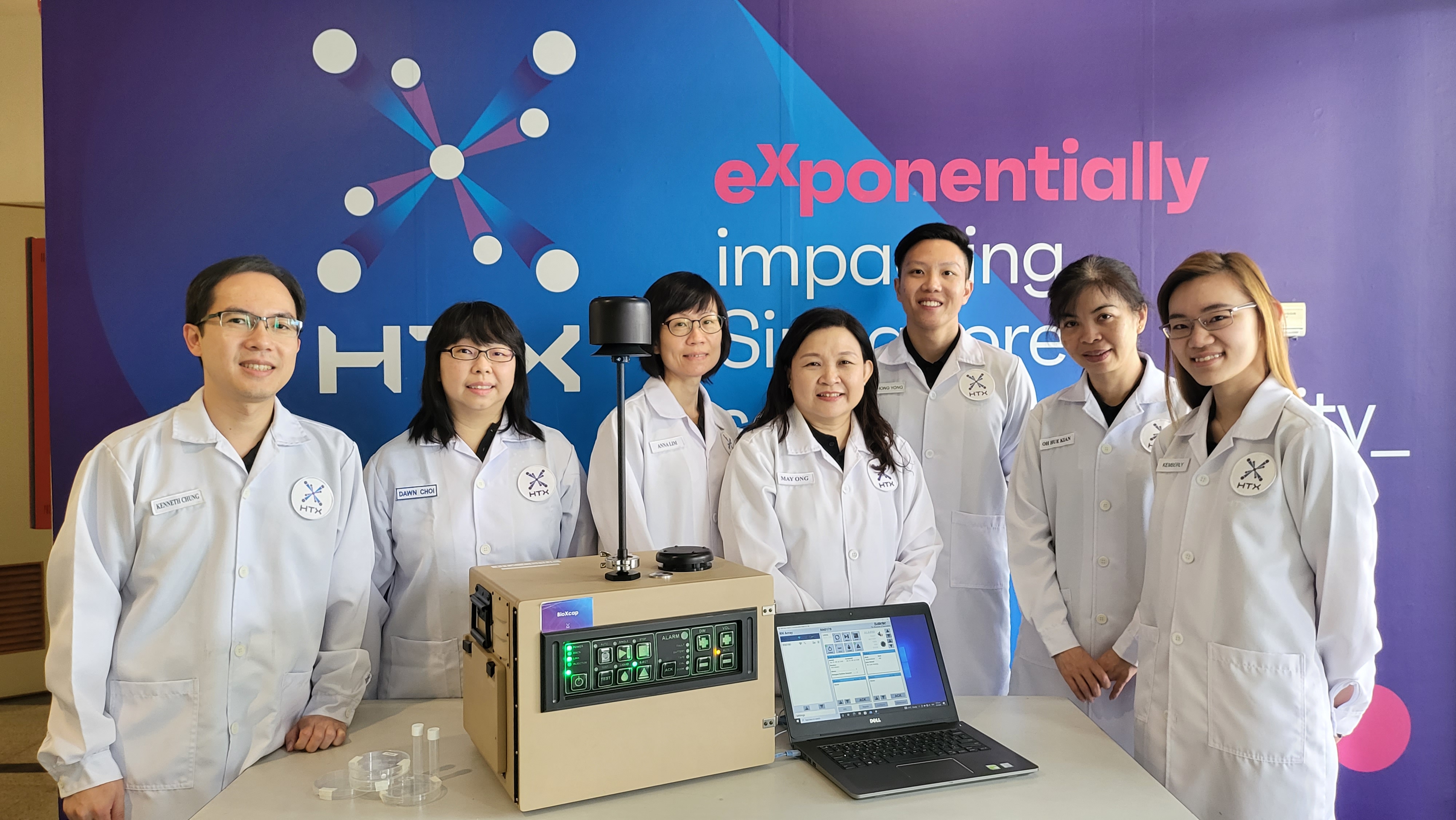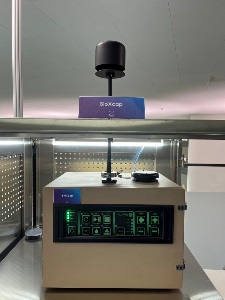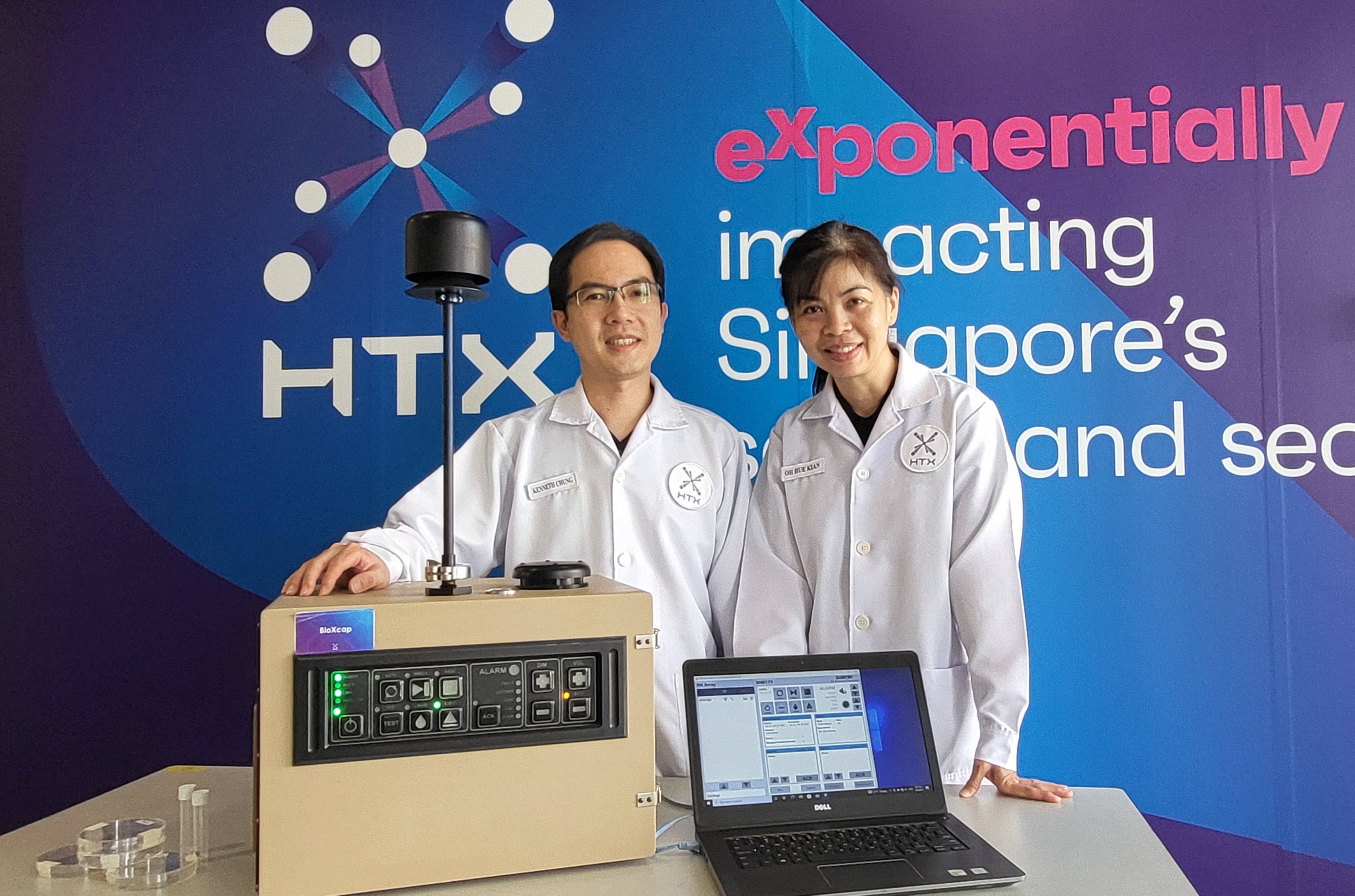HTX’s CBRNE scientists are developing new capabilities to safeguard Singapore against biological threats.

While it isn’t as well known as the threats of conventional or nuclear explosives, biological terrorism like a weaponised virus can have devastating consequences for society. For the Home Team, biological agents are particularly challenging to detect as bacteria, viruses, or fungi are microscopic and can be deadly in very small amounts, and their victims often do not exhibit early tell-tale signs of infection until it is too late.
To enhance our capabilities to detect biological threats of concern more quickly and effectively, scientists from HTX’s Chemical, Biological, Radiological, Nuclear and Explosives Centre of Expertise (CBRNE CoE) have been working on two innovative technologies: a Bioaerosol Threats Detector (named “BioXcap”) and 3rd Generation DNA Sequencer.
“These technologies look set to game-change CBRNE CoE’s capability of surveying the environment and the detection of bioterrorism agents to safeguard Singapore against these threats,” said May Ong, Director, CBRNE CoE.
Read related article: Exploring exciting innovations at HTX TechXplore 4
BioXcap, a game-changer for biological threat detection

BioXcap device on display at HTX’s fourth TechXplore exhibition held in November 2022. (Photo: HTX/ Michelle Lim)
The BioXcap is a first-of-its-kind detector that is designed to perform 24/7 environmental surveillance by itself and can provide near real-time detection of biological threats in the air.
The BioXcap combines air collection, sensor, Raman Spectroscopy, and sample archival technologies to perform on-site sampling, analysis, and real-time detection of biological threats in the air with minimal manual intervention.
Current established technologies for biological agent detection are typically lab-based and generally require a long lead-time for analysis. With BioXcap, samples will no longer need to be brought back to the laboratory for analysis after collection.
The BioXcap captures airborne particles and tests for up to 10 different types of biological threats including Anthrax and Plague. Results are produced within 30 minutes, significantly faster than the approximately three hours currently needed for samples to be manually collected, transported, and analysed at the laboratory, allowing for closer to real-time detection.
“We are able to strengthen our current detection methods with autonomous sample collection and onsite analysis, reducing man-in-the-loop and eliminating the frequent need to retrieve samples for laboratory-based analysis,” said Dr. Kenneth Chung, Senior CBRNE Scientist, CBRNE CoE.
Dr. Chung also emphasised that: “Timely detection will enable a more effective operational response from the Home Team Departments, such as containment and mitigation.”

(From left to right) Senior CBRNE Scientist Dr Kenneth Chung and Principal CBRNE Scientist (Research) Dr. Oh Hue Kian with the BioXcap in the laboratory. (Photo: HTX/May Ong)
The BioXcap is currently on trial at a land checkpoint to assess its reliability and accuracy.
“We need to stress-test BioXcap to better understand how it performs in different operating conditions, and explore how we can further enhance its capabilities,” said Dr. Oh Hue Kian, Principal CBRNE Scientist (Research), CBRNE CoE. “We have to continually innovate so that we can keep Singapore safe and prepared.”
For Dr Oh, experimentation, leveraging on tools and resources, and pushing boundaries are key to innovating to solve problems. She recently received the InnovA Champion category (Platinum) award, which recognises Home Team officers in the area of innovation, for her work in supporting the national testing efforts of Covid-19 clinical samples, especially during the early phase of the pandemic.
Read related article: HTX receives 27 Minister's Awards
3rd Generation DNA Sequencer to detect new biological threats
Another technology that the CBRNE team is working on is a 3rd Generation DNA Sequencer. The device can analyse the DNA or RNA of a biological agent in real-time and can check whether its genetic sequence matches that of known organisms.
The new DNA sequencer is also able to perform the analysis faster. Conventional DNA sequencing usually takes at least two days, but the 3rd Generation DNA Sequencer can perform full sequencing and genetic database matching in a matter of hours to identify biological agents.
This means that the CBRNE team would be more ready to detect and respond to new and emerging biological threats even when targeted PCR kits are not yet or readily available.
“In the face of evolving biological threats, the BioXcap and 3rd Generation Sequencer are new capabilities that will sharpen our readiness and safeguard Singapore against bioterrorism and biological threats of concern,” May said.
Read more about BioXcap and CBRNE’s work in the news
The Straits Times: Sensor to detect biological threats in air on trial at land checkpoint
Lianhe Zaobao: 在一陆路关卡试行 内政科技局“X侦探” 监测边境生化威胁